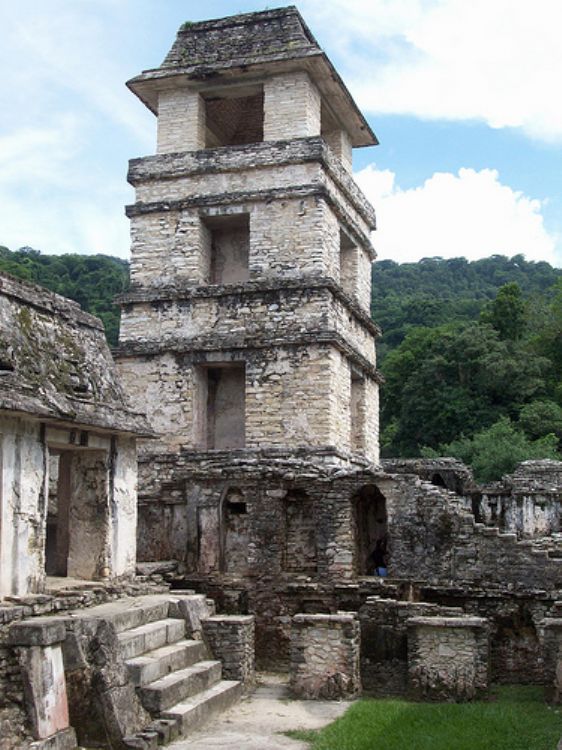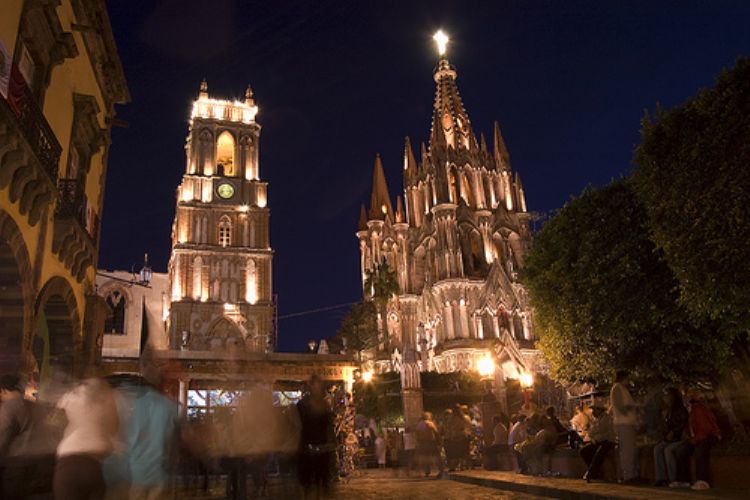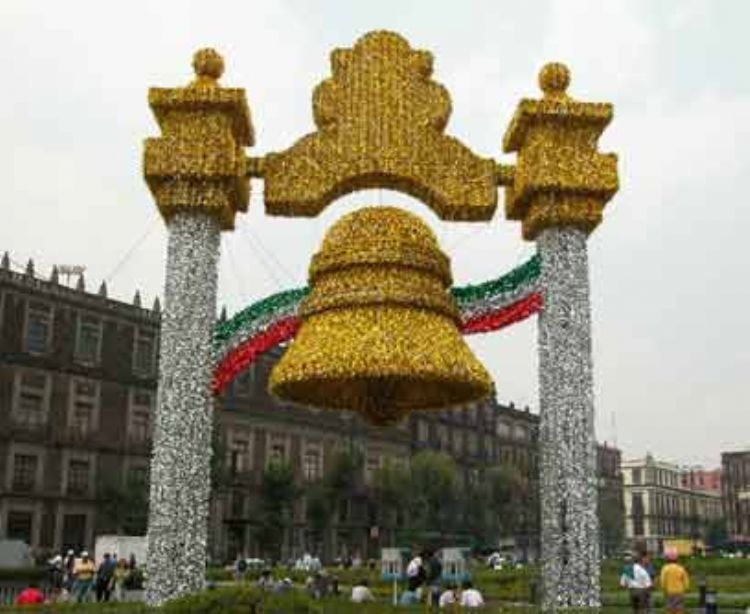
As is known to all, on September 15 is celebrated in Mexi...

Chiapas is the southern border of Mexico. State of contrasting cultures and traditions offering visitors an attractive fusion of nature, native traditions and a productive future with the magic and color exhibited all along its streets and markets. The State of Chiapas is one with the mot biodiversity in the country, hosting part of the Lacandona Jungle with more than 20% of the Mexican fauna.
Cañón del Sumidero National Park
With vertical one thousand meter high walls, Cañón del Sumidero is one of Mexico's most spectacular scenarios, the origin of one of the country's largest rivers, Grijalva River.
This geological phenomenon dates back to 36 million years and was declared National Park on December 8, 1980. It spans over 21,789 hectares, covering the municipalities of Tuxtla Gutiérrez, Chiapa de Corzo, San Fernando, Usumacinta, Chicoasén, Soyaló and Ixtapa.
The biodiversity of its ecosystem includes distinctive species, such as river crocodile, spider monkey, quail, white tail deer, puma, suirls, ant eater, ocelotes, parrot, pelican, red tail falcon, black iguana and boa. Its vegetation is predominantly jungle species and water plants.
Cañon del Sumidero Ecotourism Center
Located in the heart of Cañon del Sumidero, this park is a small and representative jungle hanging on the huge canyon walls with paths that let visitors explore its native flora, fauna and practice adventure sports.
Palenque Archeological Site
National Park and UNESCO World Heritage, Palenque is the state's most important archeological site with buildings from the Classic Mayan time, hosting the famous Inscriptions Temple. This site takes its name from the Santo Domingo de Palenque community, founded in the 17th century.
Bonampak
Famous for its murals masterfully depicting the social, political and religious Mayan life and its communities within the Lacandona Jungle, Bonampak is the most intriguing and exciting Prehispanic site on the Mayan Route. An adventure that will let you know more about these mythical people and their traditions.
The Coffee Route
Includes the passage path between the three most important coffee producers in Chiapas, La Finca Argovia, La Finca Hamburgo and La Finca Irlanda, now open as restful resorts that in addition to their spectacular natural surroundings, bring us close to the delicious coffee world and its processes. They also offer activities such as hiking for visiting other estates, they also have gourmet restaurants.
Misol-Ha and Agua Azul Waterfalls
Waterfalls of majestic beauty, these are considered among the most impressive landscapes in the world. The turquoise blue of its water and the jungle's green create one of the most generous and sublime contrasts in nature and an unforgettable memory for all its guests.
PALENQUE
Magnificent ceremonial compound of the Mayas, conformed by outstandingly beautiful buildings. Currently, an area of 1,500 sq. meters is open to the general public, who can walk through its plazas, rise to the top of the pyramids via grand stairs and even visit the crypt that contains the sarcophagus with the remains of the lord or Señor de Palenque.
The Temple of the Inscriptions exhibits numerous hieroglyphic writings, masks of the God of Rain, and some paintings such as the Mayan "Cycle of Life and Dead".
"The Palace", one of the largest and most beautiful buildings in Mayan architecture, is conformed by several structures, underground rooms, and courtyards decorated with human figures or religious and chronological scenes.
Other features of the compound include the courtyard for the practice of the famous Mesoamerican Ball Game, The Square of the Sun, and the aqueduct.
BONAMPAK and YAXCHILAN
Mayan ruins located at the western region of the state of Chiapas, near the border with Guatemala. Meaning "Painted Walls", Bonampak is widely known for its impressive murals which describe bloody warfare scenes. From here, along the Usumacinta river on boat for some 45 minutes, visitors can reach Yaxchilan, home to a stone sculpture called the "Beheaded God".
COROZAL Frontier
This is the place of convergence between the archeological sites of Bonampak and Yaxchilan, and the reserve of the "Blue Lakes", at the border with Guatemala.
It also houses a community museum of the same name founded in the year 1976, the result of the initiative of the natives with the support of the state government.
Following the discovery of two stone scriptures known as Estelas in the ruins of Yaxchilan, Corozal Frontier became a regional academic center so that both residents and visitors could learn, among other things, about the ethnic groups that still live in the Lacandona jungle. The state compound is an effort to preserve the pre-Spaniard cultures, and even serves as a shelter for the natives when the water levels of the Usumacinta river become a threat to the indigenous communities.
CULTURAL EPICENTER
SAN CRISTOBAL DE LAS CASAS
San Cristobal de las Casas is live proof of the importance of this cultural "melting pot". Natives from Chiapas and Mestizos or mixed-raced inhabitants, actually share the streets and colonial buildings of this XVII century town, within an atmosphere of increasing tolerance and adaptation. One of the most attractive towns in Chiapas, it lies in the heart of the jungle on top of the northern mountains of the state. It can be reached by plane, or driving from the state capital, Tuxtla Gutierrez, via a new road that has reduce ed the trip to less than one hour, and in addition offers the possibility to enjoy the view, admire the pine forests around San Cristobal, and experience the hot and sunny days typical of this tropical area, usually followed by cold and rainy nights.
Local attractions include a XVII century cathedral, a festive blend of baroque Spanish architecture and ingenious native art; and the church and convent of Santo Domingo, of a pure and classic baroque. During most of the year, the areas surrounding the convent are transformed into indigenous markets, where the Chamula women, wearing their typical blue blouses and black skirts and serapes, offer a wide variety of garments and other hand-woven textiles. A gallery and shop that belongs to a cooperative of Tzotzile weavers and known as the Weavers House, can be found near the church of Santo Domingo.
Amber happens to be found in great quantities around the region, and the Amber Museum, housed in the former convent of La Merced, exhibits different types of fossilized resins, as well as the various methods for its extraction.
The towns of San Juan Chamula and Zinacatan are located near San Cristobal, and they offer great examples of indigenous art and tradition, as well as rites of both native and Christian nature performed inside the towns churches. These cult practices taking place inside a catholic church usually fascinate visitors, who can actually witness the interplay of symbols like the cross with magical potions and dead poultry.
ECO-TOURISM
MONTEBELLO LAKES
These lakes, 59 kilometers from Comitan, are one of the preferred destinations for those who venture into the southern border of Mexico. This chain of natural small lakes or wells called Cenotes , currently formed by 52 lovely lagoons of diverse color, size and shape, was listed as National Park in the year 1959.
The Tziscao lagoon lies in the middle of the border shared by Mexico and Guatemala, and it offers visitors the possibility of camping, swimming and even enjoying some delicious local stews.
Not far from here, the Chincultik archeological area can be found, home of an ancient Mayan temple, on top of which, after climbing 200 steps, visitors can look down and imagine the scene where young and beautiful maidens were thrown down by priests as offerings to the gods.
ZOOMAT
Regarded as the best zoo in Mexico, the Zoomat is an example of the effort of modern Mexicans to preserve the beauty of their natural settings. Along a 25 kilometer path, visitors can enjoy numerous regional species that are either endemic or endangered, such as the spider monkey, the jaguar, the quetzal and the ocelot.
OTHER NATURAL WONDERS
The extensive territory of the state of Chiapas is home to a great variety of natural settings worth visiting. Some of them are :
BLUE WATER CASCADES
Beautiful waterfalls formed as Xaxha and Xanil rivers descend 1,000 meters into the Gulf of Mexico.
THE DRAIN CANYON
With walls over 1,000 meters tall, this geological fault represents a popular path of 15 kilometers on board a motorized boat.It was listed as National Park in 1982.
SAN CRISTOBAL CAVES
Located within a pine forest, these amazing natural caves even offer conveniences as games areas, food zones and local crafts shops.

As is known to all, on September 15 is celebrated in Mexi...

The Magical Towns of Mexico are cities that have witnesse...

Are you tired of always doing the same on vacations? Hot-...

Gross Domestic Product (GDP) is the total monetary value ...

The Cristero War is also known as Cristiada. It was an ar...

The Magical Towns of Mexico are cities that have witnesse...

January 1st celebrates New Yearâs Day and is a day of o...

In the prehispanic world, the concept of death played a f...